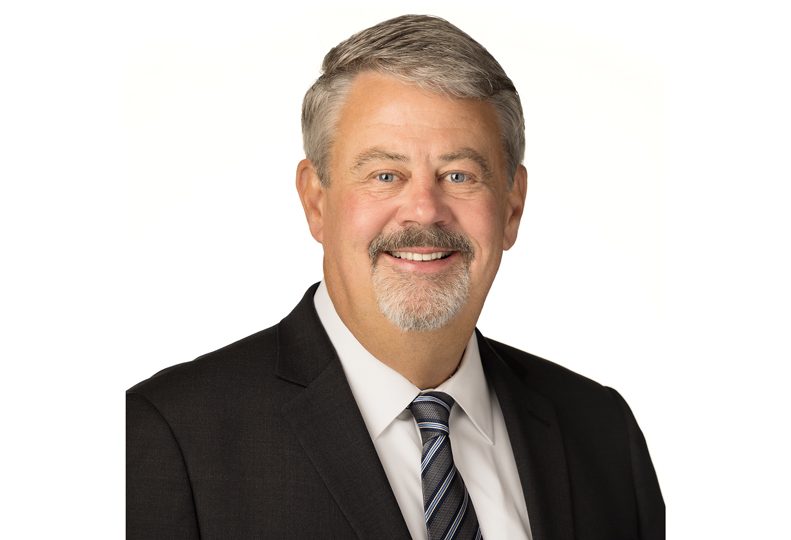
Home » Visions 2023: INW's clean energy future will take reimagination
Visions 2023: INW's clean energy future will take reimagination
Avista's role emphasizes 'innovation with intention'

December 29, 2022
The recent pandemic reminded us just how critical energy is to the lives and livelihoods of so many. Through these uncertain times, we, at Avista, have kept people warm and safe, and we’ve kept our economy rolling during a period when businesses have been hit hard by disruptions related to the pandemic, supply-chain challenges, inflation pressures, and numerous other factors.
We’ve had the privilege of providing the energy that powers our region for more than 133 years. And delivering on our mission gets more complicated every day as new regulatory requirements and restrictions are passed, societal pressures build, and expectations shift as we transition to a clean energy future.
Indeed, the energy landscape continues to change. And so do customer expectations. As more people install rooftop solar, we still need to deliver reliable service when the sun isn’t shining. As electric vehicle adoption grows, we must adapt to accommodate fluctuating energy loads. And as some groups push to restrict or even eliminate natural gas as an energy source, it compounds the pressure on the existing electric grid.
How do we meet these evolving energy needs, and at the same time ensure we can provide the clean and reliable energy our customers expect? How do we pay for the added costs related to addressing these changes, while keeping energy affordable? Achieving this balance is one of the biggest challenges facing Avista and the entire energy industry.
Clean energy progress
Avista has set goals to serve its customers with a carbon-neutral supply of electricity by the end of 2027—and carbon-free electricity by 2045. Our aspirational natural gas goal is to reduce greenhouse gas emissions by 30% by 2030, and to be carbon neutral by 2045.
Avista was the first utility to file and receive approval of its Clean Energy Implementation Plan in Washington. We’re already taking steps to implement this road map of actions we intend to take to achieve our clean energy goals.
We’re certainly making progress. But we’re not there yet.
To achieve the clean energy future that we all want, we must continue to innovate. Avista has a long history of innovation. The latest examples include the Catalyst building and the adjacent Scott Morris Center for Energy Innovation. Both buildings are powered by an innovative shared energy model we call an Eco-District.
They demonstrate how Avista continues to invest in innovation with intention.
When we realized that Avista owned the property where the new Gateway Bridge landed, we had an opportunity to extend the footprint of Spokane’s innovation sector that has taken root in the University District, and at the same time, create what our chairman Scott Morris envisioned as “the five smartest blocks in the world.”
Avista provided the land and strategically recruited the right partners to make it happen.
Innovation guided our every decision. From their inception, Catalyst and the Scott Morris Center were designed to interact with each other. They “talk” to each other—and to the energy grid. The heart of the Eco-District is the central plant that powers both buildings.
Our approach involves our utility partnering with building operators to run grid-friendly buildings that leverage the existing grid, helps avoid costly construction to meet energy needs, and provides flexibility when operating the grid. What we learn could lead to a more affordable clean energy future.
Here’s another game changer: Avista’s Energy Innovation Lab is using a real-time grid simulator to help us fast-track the pace of innovation and accelerate our ability to test new ideas and deploy them with confidence at utility scale.
Partnering with customers
Every year, Avista directly invests hundreds of millions of capital dollars to modernize our grid to meet our customers’ needs and to prepare for our energy future. One of the largest capital projects in our company’s history involved installing smart electric meters and smart natural gas modules across Washington, enabling customers to manage their energy usage better. Avista can now proactively send high energy alerts to notify customers if they could exceed their set energy budgets, which helps eliminate surprises when their bill arrives. It’s one way we continue to put customers at the center of all that we do.
If you want to lower your carbon footprint, Avista offers several renewable options, including our My Clean Energy program for electric customers and a voluntary renewable natural gas program. Our Solar Select program for commercial customers is already fully subscribed.
We continue to engage customers to build understanding about not only how much energy they use, but when they use it. For example, encouraging people to charge their electric vehicles during off-peak hours helps us leverage the existing grid, which benefits all of us.
Finding the right balance
We know that the future will require a more flexible grid to meet the fluctuating energy loads required to ensure reliability and resiliency. It will require a deeper level of engagement with customers as we partner with them in new and mutually beneficial ways. And it will require new innovations.
Of course, these changes come with a price tag. As we define our strategies and decide what steps we’ll take, cost must be a factor. To help ensure that energy is affordable for the most vulnerable among us, the pace of change to achieve our clean energy goals may be impacted.
Today, as we continue to re-imagine the future of energy, I’m confident we can all work together to find the right balance in our mission to provide clean, reliable energy at the most affordable price. Each one of us has a role in creating a clean energy future for all of us.
Dennis Vermillion is president and CEO of Spokane-based Avista Corp.
Latest News



